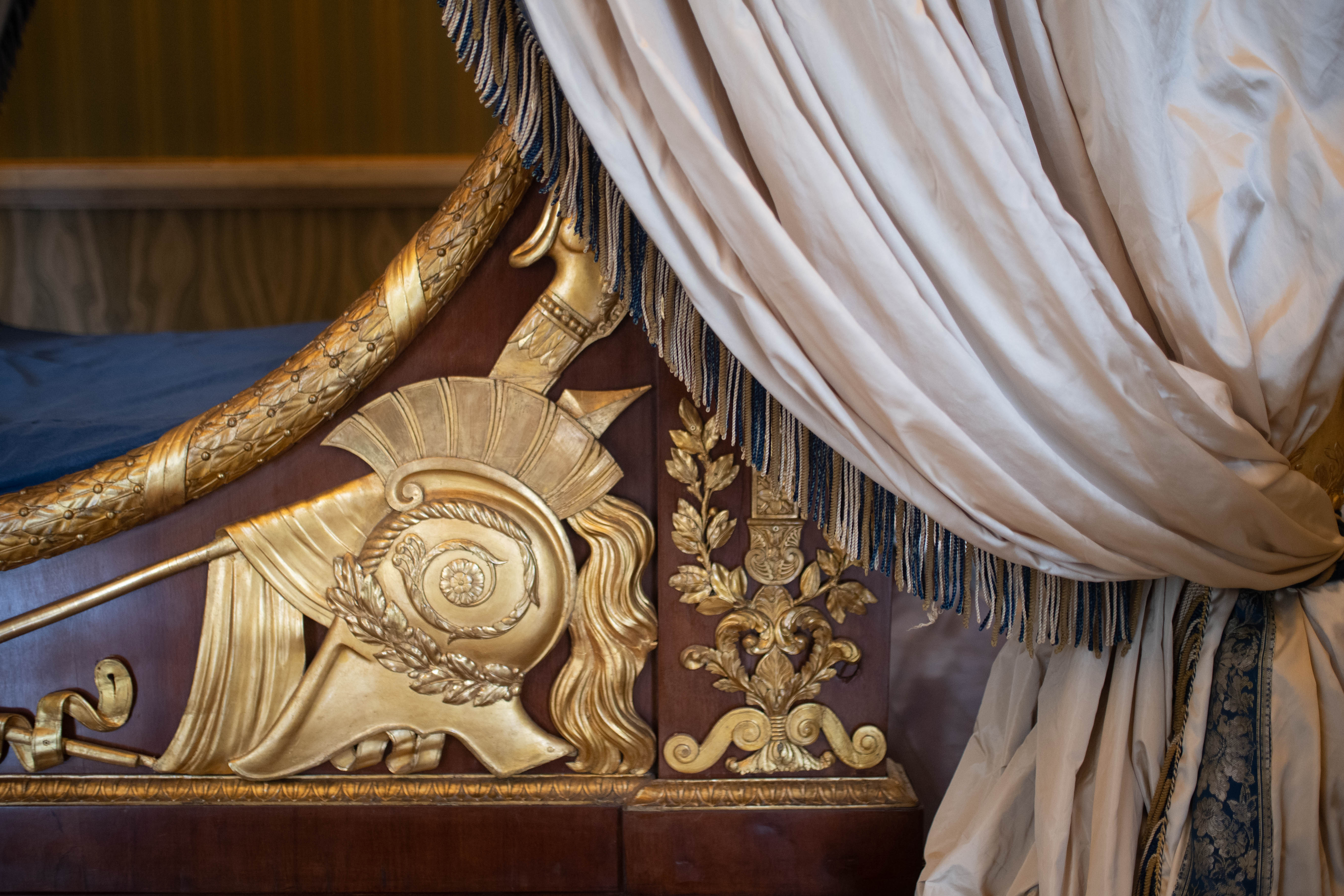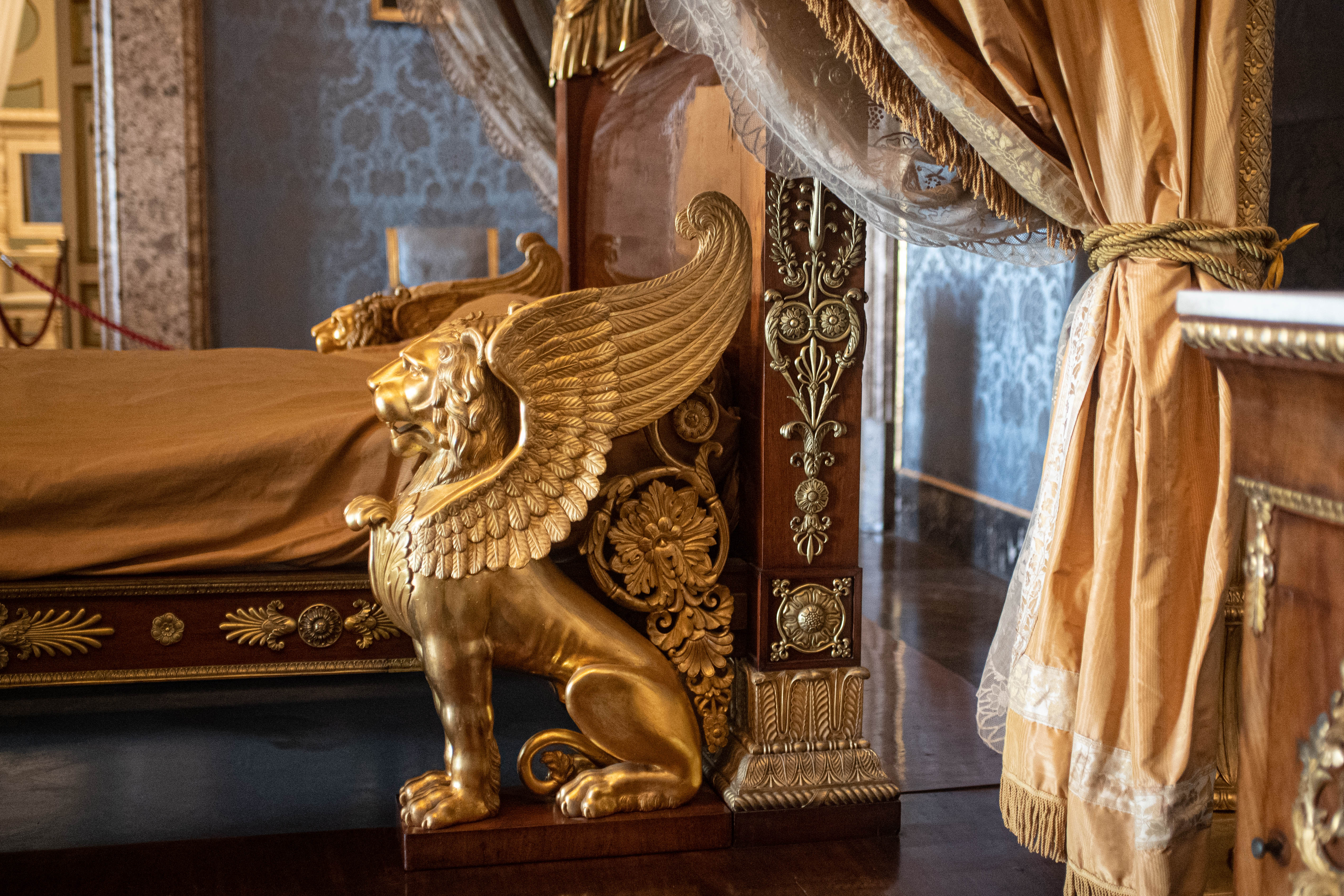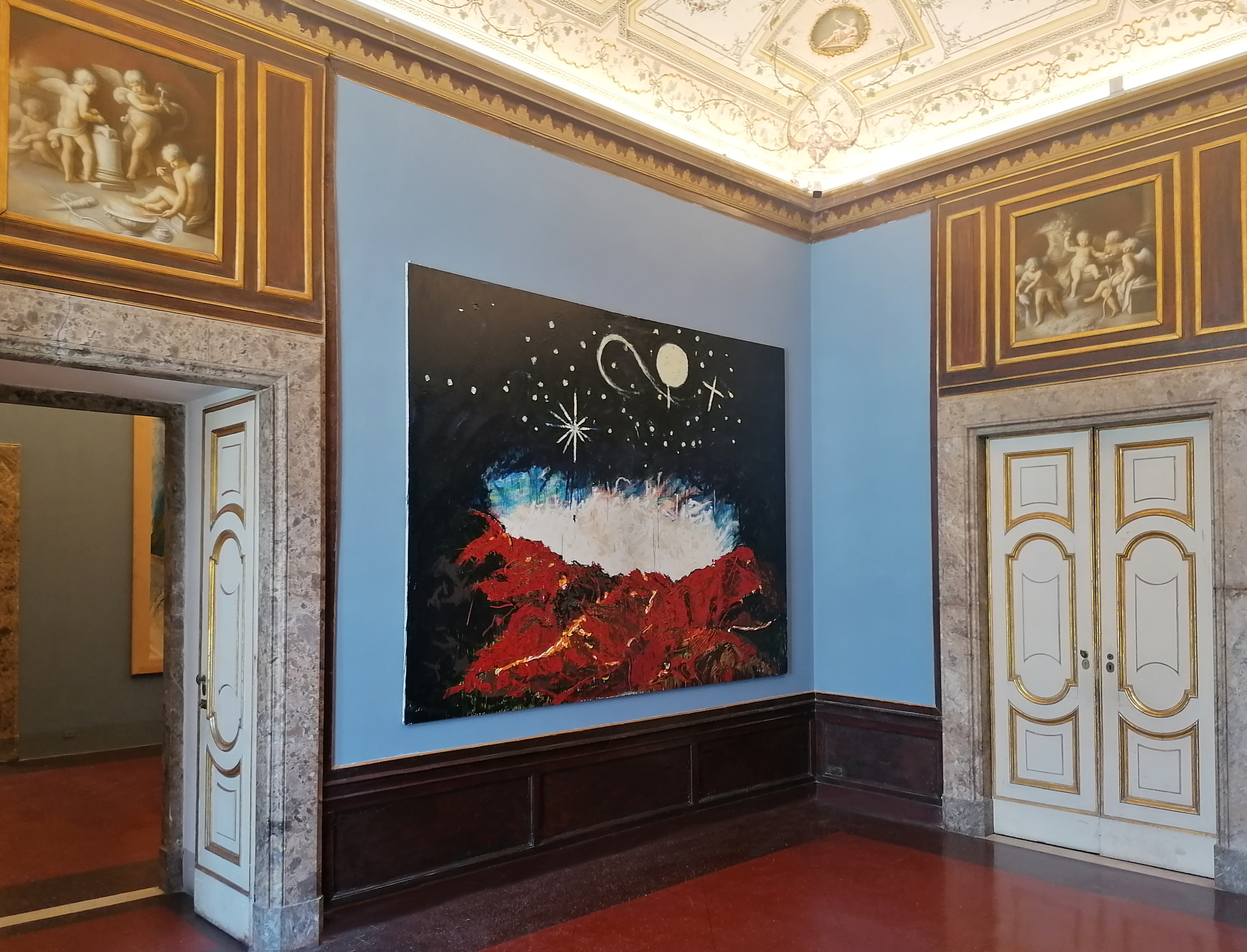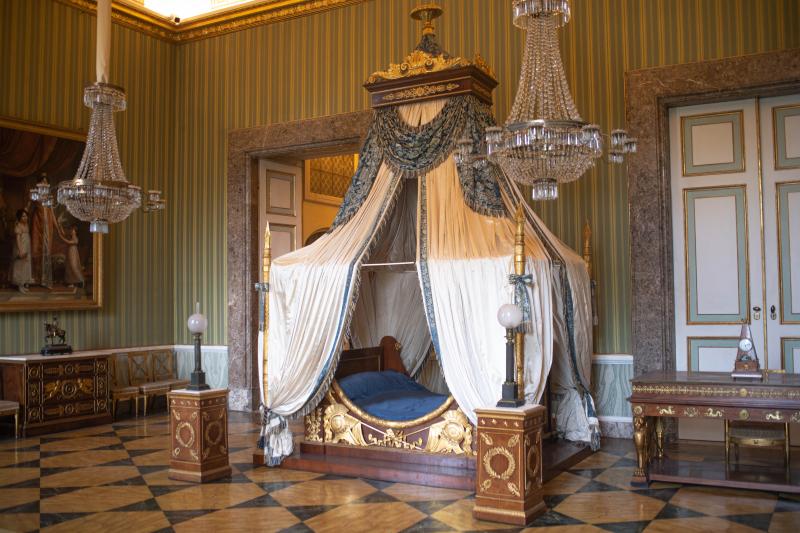The 19th-century wing of the Royal Apartments in the Royal Palace of Caserta — centerpiece of its city and the Versailles-rivaling vision of Bourbon King Charles III — reopened to the public last week after a lengthy restoration.
Tiziana Maffei, General Director of the Royal Palace of Caserta, said at the inauguration, “Reviving the dignity [befitting] of a Royal Palace — along with the great allure and beauty envisioned by the Bourbon patrons — requires, today, a great investment of economic and professional resources.” Maffei went on to thank the specialists and workers involved for their “expertise, passion, and sense of responsibility toward the public good.”
A rundown of the restoration

At the core of the royally ambitious restoration — carried out by a specialized team from the Ganosis group — were the bedrooms containing four-poster beds and lavish bedside tables that belonged to rulers Joachim Murat and Francis II of the Two Sicilies.
In both Francis II’s and Murat’s rooms, efforts primarily concentrated on fabrics and textiles, given that the mahogany beds were found to be in fair condition, with only minor interventions needed. One regionally-rooted upgrade to Murat’s room was among the most impactful changes: During the “triage” stage of the project, assessors found that the ivory and blue-fringed satin of the bed’s canopy curtains was industrial-quality and poorly preserved, and had likely been added years after the bed was built. Organizers saw an opportunity to involve an important tradition — silk production from the San Leucio complex, part of the grounds and created to serve the Bourbon court. Italian Ministry of Culture representatives reached out to Caserta’s Chamber of Commerce to request a donation, and some 100 meters of silk satin and another 100 meters of taffeta came courtesy of the San Leucio textile network, giving the bed back its “royal garb.”
In addition to the chambers and antechambers of the historic Royal Apartments, the Stairway of Honor, 1,400 square meters' worth of faux marble-painted terracotta floors, gold leaf across 812 square meters of doors and hatches, and numerous brass and crystal chandeliers all underwent restoration.
Innumerable new fixtures were also installed, and some 189 pieces of furniture underwent maintenance. Additional upgrades were made to the Sala del Consiglio (Council Chamber) Sala delle culle (Cradle Room), and the Chapel of Pope Pius IX.
The project was financed by the Culture and Tourism Plan 2014/2020 from the Italian government Fund for Development and Cohesion.
History of the courtly crib

The Royal Palace of Caserta (Reggia di Caserta) was commissioned by Bourbon King Charles III in 1751 as a grand vision intended to rival its French predecessor, Versailles. Located just north of Naples, the monumental estate is, at 123 hectares, the largest former royal residence in the world. Designed by Neapolitan architect Luigi Vanvitelli and later undertaken by his son, Carlo, it was declared a World Heritage Site by UNESCO in 1997.
An outstanding example of Italian Baroque, the massive complex includes the sumptuous palace — which boasts over 1,200 rooms, grand staircases and richly adorned apartments — and is surrounded by a park and fountain-filled ornamental gardens. There’s also a natural wooded area, hunting lodges, the Caroline Aqueduct (also known as the Vanvitelli Aqueduct) and the aforementioned industrial complex of San Leucio.
“Bonus” viewing: the Terrae Motus Collection

To coincide with the inauguration of the newly restored rooms of the 19th century wing, the Palace has brought back the Terrae Motus Collection for public viewing. Woven within the rearranged 19th-century wing and the 18th-century back rooms, the Terrae Motus Collection is a pipeline of work created by major 20th century artists. Compiled by renowned gallery owner Lucio Amelio after an earthquake hit the Campania and Basilicata regions in 1980, the collection contains work by Keith Haring, Robert Mapplethorpe, Robert Rauschernberg and Andy Warhol.
If you go
Reggia di Caserta
Piazza Carlo di Borbone, Caserta
Tel. +39 0823 448084
Royal Apartments and Museum
Open: 8.30am – 7.30pm, Wed-Sun
Website









